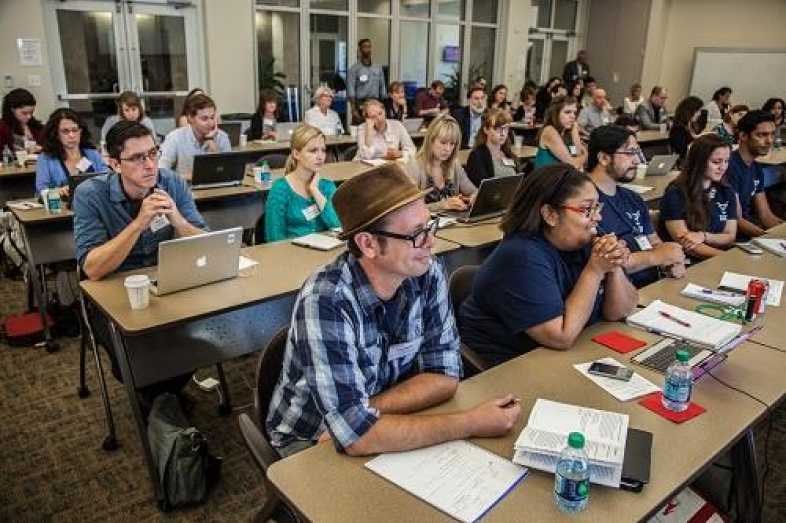

Stephanie Dupaul of Southern Methodist University put the theme of EWA’s 2014 Higher Education seminar, “The Good, the Bad and the Ugly: Covering the College Student Experience,” to effective use during a session exploring the use of data by colleges:
- Data in higher education can be good: It can help colleges improve a student’s experience and keep some students from quitting.
- Data can be bad: College admissions officers could be tempted to weed out students who fit certain profiles.
- Data can be ugly: It can’t tell the whole story; it can only give broad-brush impressions.
Dupaul and the other panelists for the session, held Sep. 5 in Dallas at Southern Methodist University, offered perspectives on how data can help colleges more effectively guide students to successful paths through college.
For instance, schools concentrate on recruiting students. A focus on data can help universities and colleges re-energize their efforts on retaining students, pointed out Ed Venit of the Education Advisory Board.
And it’s a lot less expensive to retain them than to recruit them, added Dupaul.
Schools can take information from the “murky middle” – the group of students who aren’t failing but aren’t necessarily progressing toward a degree — and figure out which students could productively stay, Venit said. But there’s a difference between Billy, who gets As, Bs and Cs in both required courses and electives, and Bobby, who gets Cs in required classes and As in electives. Billy is more likely to stay. In fact, students who consistently get Cs in major courses are as likely to drop out as students who receive Ds and Fs, Venit noted.
The use of this sort of data offers universities a variety of ways to try to become more effective. For instance, seven urban universities were chosen by the Association of Public Land-Grant Universities to transform the higher education experience for students through the use of data.
The universities will transform data into “actionables” to help students. It could mean a reallocation of resources, noted APLU’s Shari Garmise – for instance, investing more money into advising and counseling. “As we’re able to understand [the picture], it starts to unearth all the bottlenecks,” Garmise said.
And she reiterated a theme running through the presentations: “Data isn’t always numbers – it’s qualitative data, as well as quantitative data.”
After moderator Libby Nelson of Vox raised the issue of whether colleges can know too much about students and whether such a focus on data can essentially limit students to their demographic destinies, panelists agreed there are dangers of misusing and abusing data.
“Data could be the next siren song” that leads schools to the rocks if they overinvest, warned Dupaul.